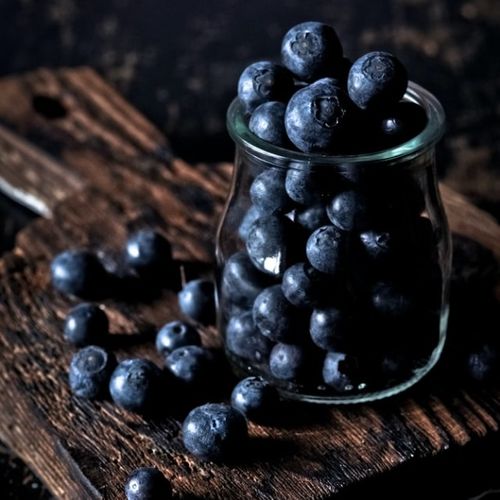What Makes Blueberries Blue?
Jul 15, 2022 · 2 mins read
0
Share

Blue is a relatively uncommon colour in the natural world. Few animals except birds, butterflies, insects and whales are blue. Fur for example is never tinged blue. The primary colour is the least frequent tone found on our plates and in our diets. So what makes blueberries blue?
Save
Share
Blueberries, along with raspberries, black soybeans and black rice, appear blue, dark purple or red. Tulips, poppies, purple corn, eggplant, red cabbage, grapes, cherries and plums can have a similar shade. These species all have a water-soluble pigment in common - anthocyanin.
Save
Share
What are the evolutionary advantages of being blue? The blue-ish purple colouration may aid in seed dispersal by attracting herbivores who consume the fruit and excrete the seeds a distance away from the plant, thus increasing the seeds chances of germination and growth.
Save
Share
Anthocyanin, and the polyphenols which emit the vibrant blue hue, may also play a role in the plants physiology. To combat extremely low temperatures, some species of tomato have evolved the pigment which counters reactive oxygen and leads to lower cell death in leaves.
Save
Share
The coloured parts of a plant may be used protect the leaves from attack by herbivores. Predators attracted to a lurid green chlorophyll-rich colour maybe put off by streaks, patches or strands of blue, purple or red which they may consider poisonous, causing them to steer clear.
Save
Share
Anthocyanin in plants and produce is also a useful indicator of soil PH. Like Hydrangea, known as the Change Rose, the coloured fate of the flower or fruit lies in the acidity of the soil it is planted in. Acidic soil produces a blue flower, alkaline a bright red or dusty pink.
Save
Share
Scientists hypothesise our Neolithic ancestors may have avoided blue or purple foodstuff for fear of poisoning. But blueberries are extremely nutritious, easy to dry and can be preserved longer than other berries. They were likely an important source of sustenance during winter.
Save
Share
The first crop of blueberries was cultivated in the US in 1912 and evidence exists that they have been eaten, dried and used for medicinal purposes for over 13,000 years by Native American tribes. The abundant wild fruit was boiled, shaped into cakes and dried in the sun.
Save
Share
Anthocyanin is an antioxidant, it fights the free radicals that cause cell damage. Blueberries are a superfood, rich in nutrients and vitamins and have even been shown to destroy fat! According to recent studies, flavonoids in blueberries may improve memory in dementia patients.
Save
Share
Next time you encounter the colour blue in a fresh veggie salad, fruit bowl or anywhere else in nature, remind yourself how rare the shade is. From plums to heirloom tomatoes, anthocyanin is the pigment which imbues that unmistakable hue. So that's what makes blueberries blue!
Save
Share
0